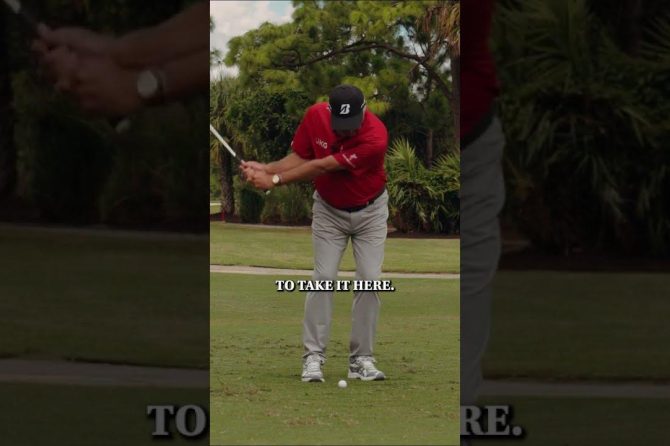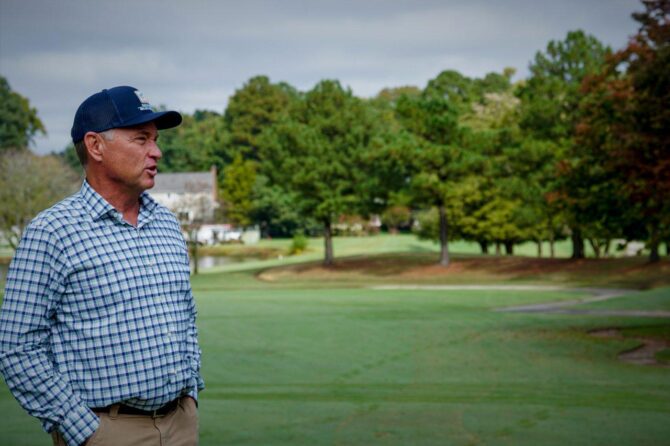Analyzing the Attributes and Impact of Golf Legends
The realm of professional golf has long been adorned with the names of extraordinary athletes whose legacies resonate far beyond the boundaries of the sport. Golf legends such as Jack Nicklaus, Tiger Woods, and Annika Sörenstam have not only redefined excellence through their remarkable performances but have also shaped the very identity and culture of golfing across the globe. This article seeks to conduct a comprehensive analysis of the attributes that delineate these iconic figures, focusing on the psychological, physical, and strategic competencies that elevate them to legendary status. By examining their mental fortitude, technical prowess, and ability to navigate the complexities of competition, we can gain insight into the factors that underpin their success and the impact they have had on the evolution of the game. Furthermore, the interplay between their individual characteristics and the broader cultural significance of their achievements will be explored, elucidating how these athletes have inspired future generations and contributed to advancements in the sport. Through this critical examination, we aim to deepen our understanding of the multifaceted nature of golf legends and the enduring legacy they continue to forge within the sporting landscape.
Exploring the Technical Prowess of Golf Legends
The technical prowess displayed by golf legends is often a convergence of innate talent and meticulous training. Such athletes have mastered the intricate mechanics of the golf swing, demonstrating a deep understanding of physics and biomechanics. Ben Hogan, for instance, revolutionized the way amateurs perceive the golf swing by introducing a systematic approach to grip, stance, and angle. His methodologies emphasize the importance of precise body movements and their synergy in executing a perfect swing. By embodying these principles, players are able to achieve greater accuracy and distance.
A key attribute that sets these legendary golfers apart is their mental fortitude. Beyond physical skill, legends like Hogan recognize the mental aspects of the game as crucial components of success. This includes the ability to visualize shots, maintain composure under pressure, and cultivate a resilient mindset. Such mental discipline allows these athletes to navigate the intricacies of the game effectively, ensuring they remain focused and committed, even during challenging conditions. Emulating these traits can significantly enhance a golfer’s performance on the course.
Moreover, the legacy left by golf legends can be encapsulated in their commitment to continuous improvement and adaptation. Each generation of golfers learns from the previous, transforming old techniques into modern practices. This evolution is best illustrated in the way Hogan’s timeless principles have been reinterpreted to suit contemporary playing styles. The table below highlights some crucial aspects of Hogan’s teachings that remain relevant today:
| Aspect | Description |
|---|---|
| Grip | Establishing a firm yet relaxed grip to foster control and power. |
| Stance | Adopting a balanced stance for improved stability and swing mechanics. |
| Posture | Maintaining proper posture to enhance swing efficiency and minimize injury. |
| Follow-through | Executing a complete follow-through to ensure consistency and accuracy. |
The Influence of Swing Mechanics on Performance
In the realm of golf, mastering swing mechanics is paramount for optimal performance. Ben Hogan meticulously dissected the elements of a successful swing in his iconic book, emphasizing techniques that contribute to both power and accuracy. Hogan’s insights revolve around understanding the body’s natural motion and employing harmonious movements that culminate in a fluid swing. Each golfer’s unique physical attributes necessitate personalized adjustments, yet the fundamental principles laid out by Hogan act as a universal foundation for all.
To enhance one’s swing mechanics, Hogan accentuates several critical attributes that golfers must focus on:
- Grip: The starting point of effective swing mechanics; a proper grip ensures consistent club control.
- Posture: A solid stance lays the groundwork for balance, agility, and rotational movement during the swing.
- Alignment: Proper alignment indicates the intended target line, which influences the trajectory and accuracy of each shot.
Furthermore, the influence of swing mechanics extends beyond individual performance, impacting the overall consistency of a player’s game. Hogan’s emphasis on repetition and practice allows golfers to engrain these principles into muscle memory, facilitating a more reliable swing. The synergy created from mastering these mechanics leads not only to improved scores but also instills confidence in players as they approach each shot. Those who embrace Hogan’s teachings can witness a significant transformation in their game, making the study of swing mechanics an integral component of their development journey.
Understanding the Mental Game of Professional Golfers
The mental game in golf serves as a critical foundation for achieving success on the course. Professional golfers understand that while technical skills like swing mechanics are vital, their psychological state plays a pivotal role in performance. The ability to maintain focus, manage anxiety, and cultivate a strong sense of self-confidence can dramatically influence a golfer’s outcome in a tournament. This understanding sets the legendary players apart from the rest, as they master both the physical and mental aspects of the game.
Key attributes of a strong mental game include:
- Focus: The ability to concentrate on the task at hand, blocking out distractions from both the environment and internal thoughts.
- Resilience: The capacity to recover from mistakes and setbacks, allowing golfers to maintain their composure under pressure.
- Visualization: Successful golfers often visualize their desired shots, enhancing their execution and increasing their self-belief.
Strategic Approaches:
| Strategy | Description |
|---|---|
| Pre-shot Routine | A consistent series of steps taken before each shot to create a calm and focused mindset. |
| Positive Self-talk | Using affirmations and encouraging phrases to foster confidence and combat negative thoughts. |
| Set Goals | Establishing clear, achievable objectives for practice and competition to measure progress and maintain motivation. |
Assessing the Evolution of Training Techniques in Golf
In the years since Ben Hogan penned his guiding principles in Five Lessons, the approach to training techniques in golf has undergone substantial transformation. Initially, Hogan emphasized the significance of understanding the fundamentals of grip, stance, and swing path through rigorous practice grounded in repetition. Modern golfing techniques, however, have integrated insights from sports science, biomechanics, and technology, leading to a more holistic perspective on training. This evolution manifests in several key areas:
- Biomechanical Analysis: Players now utilize advanced motion capture technology to analyze their swings, allowing for precise adjustments that enhance efficiency and power.
- Customized Coaching: With access to data analytics, instructors can tailor training regimens to suit individual goals and physical capabilities, departing from a one-size-fits-all approach.
- Mindset and Visualization Techniques: The mental component of the game is now recognized as equally vital, encouraging players to incorporate psychological strategies and visualization into their practice routines.
The integration of fitness training into regular practice sessions is another significant shift in the evolution of golf training techniques. Contemporary players are increasingly prioritizing physical conditioning, leading to enhanced strength, flexibility, and endurance, which are critical for maintaining top performance levels throughout tournaments. This shift has resulted in a renewed focus on:
| Focus Area | Impact on Performance |
|---|---|
| Strength Training | Increased club speed and distance. |
| Flexibility Exercises | Improved swing mechanics and reduced injury risk. |
| Endurance Workouts | Enhanced concentration and stamina during long rounds. |
while Hogan’s Five Lessons provide an essential foundation for understanding the mechanics of golf, modern training techniques recognize the multidimensional nature of athletic performance. The synthesis of traditional fundamentals with contemporary practices not only honors the legacy of legends like Hogan but also paves the way for the next generation of golfers. By combining historical knowledge with progressive methodologies, athletes can achieve a greater understanding of their game, fostering continuous growth and evolution in the sport.
Cultivating a Legacy: The Lasting Impact of Iconic Players
The impact of iconic players in the realm of golf extends well beyond the greens; it cultivates a legacy that inspires future generations. Figures such as Ben Hogan, Jack Nicklaus, and Tiger Woods have not only redefined the mechanics of the game but have also influenced its culture and accessibility. Their techniques, strategies, and personal stories of perseverance serve as blueprints for aspiring golfers. Many players continue to study their methodologies, striving to emulate their champions and contribute to the sport’s evolution.
Ben Hogan’s meticulous approach to swing mechanics, encapsulated in his seminal work “Five Lessons,” has been a cornerstone of professional instruction. This work emphasizes the importance of foundational principles, such as grip, stance, and alignment, showcasing Hogan’s commitment to personal mastery and discipline. The enduring relevance of his teachings fosters a deep understanding of the game’s complexities and encourages an analytical mindset among golfers. Such contributions create a profound ripple effect within the golfing community, challenging novices and veterans alike to refine their skills.
The legacy of these iconic players is further punctuated by their philanthropic efforts, seeking to broaden golf’s reach. Initiatives that promote youth development and inclusivity highlight a shared responsibility among golf legends to foster new talent and ensure the sport remains vibrant. In this context, the attributes of dedication, innovation, and resilience, embodied by these legends, serve as essential qualities for the next generation. Their influence acts as a guiding compass for both players and fans, establishing a community united by passion and respect for the game.
The Way Forward
the analysis of the attributes and impact of golf legends provides valuable insights into the multifaceted nature of elite athletic performance. These extraordinary individuals not only demonstrate exceptional technical skills and physical capabilities but also embody the psychological resilience and strategic acumen necessary to excel at the highest levels of the sport. Their legacies are shaped not only by their remarkable achievements on the course but also by their influence on the game, inspiring future generations of golfers and shaping the evolution of the sport itself. As we continue to study the traits and techniques of these legendary figures, we deepen our understanding of what it means to achieve greatness in golf, highlighting the intricate interplay between talent, hard work, and the innovative use of technology. This exploration reinforces the notion that the impact of golf legends transcends mere statistics; they are pivotal in enhancing the cultural and competitive landscape of golf, leaving an indelible mark that will resonate within the sport for years to come.





